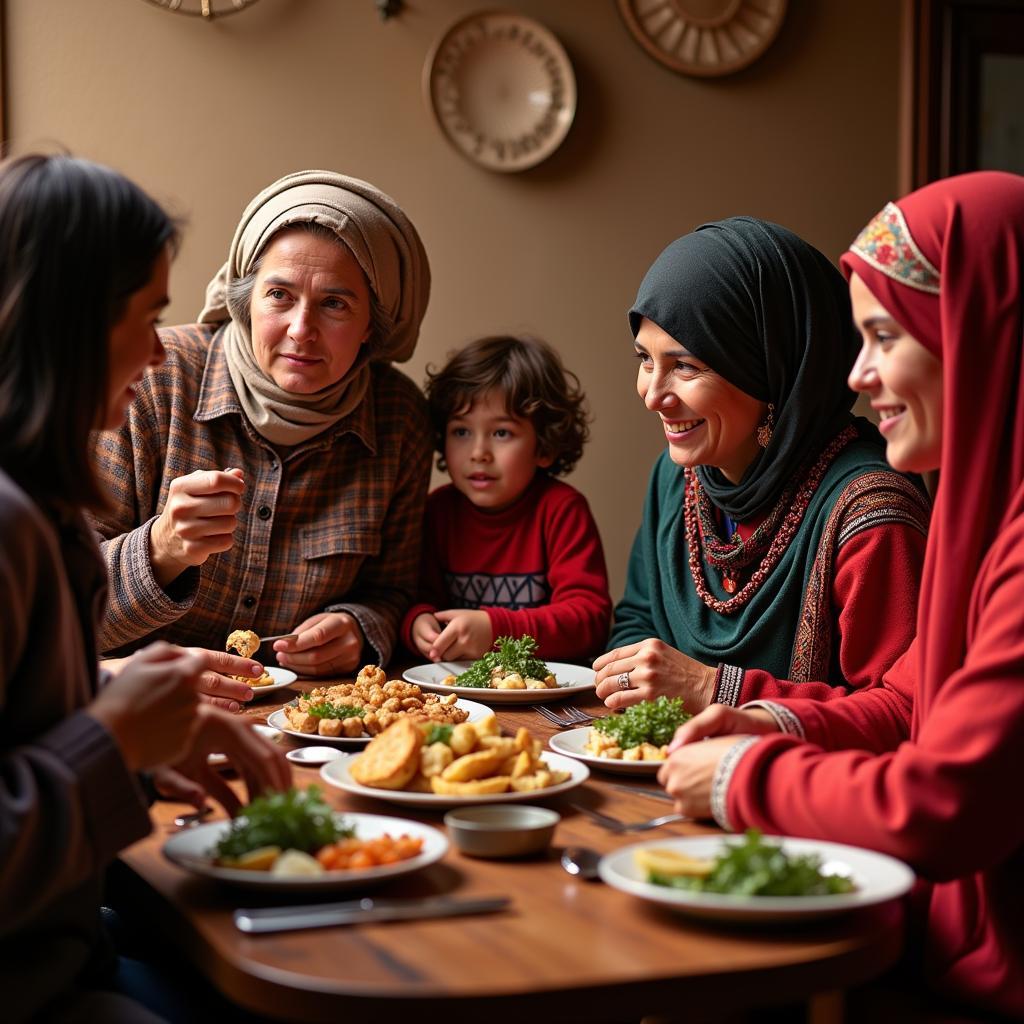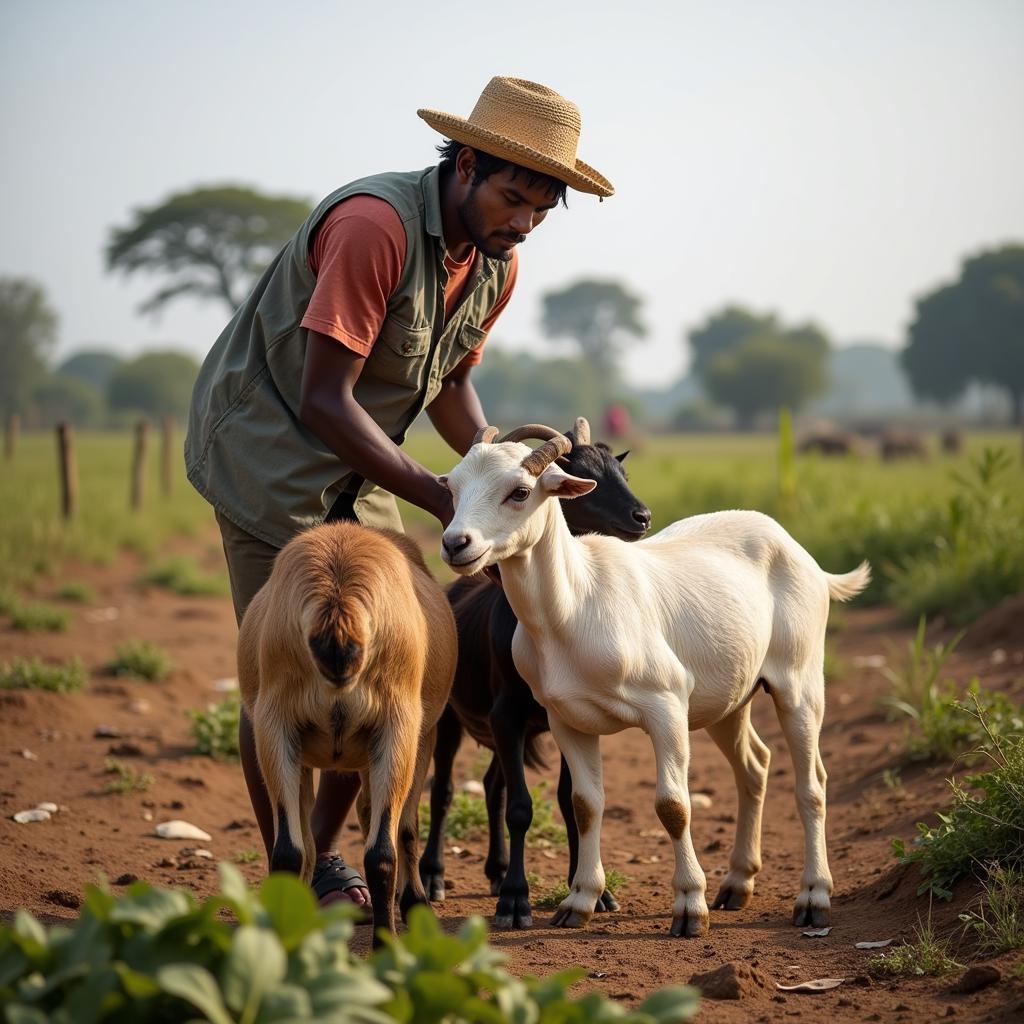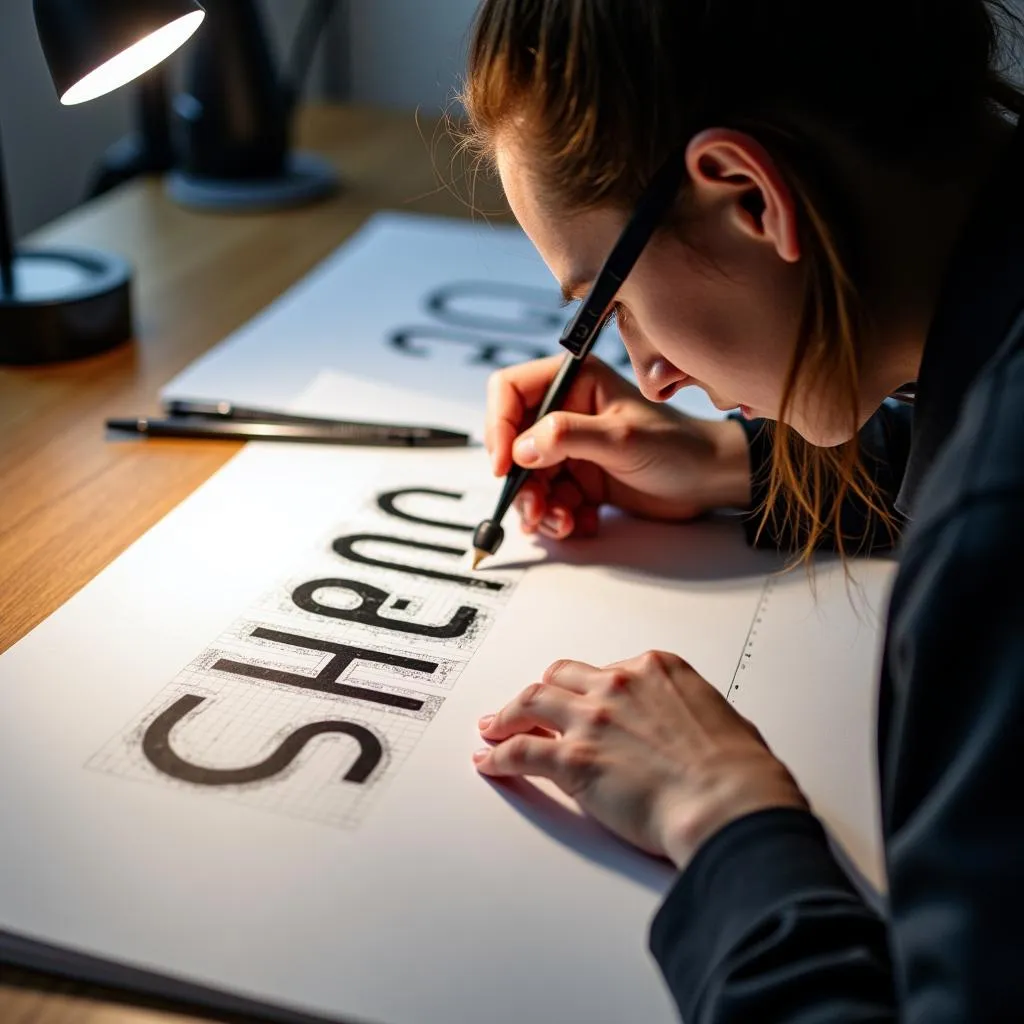Exploring the Vibrant World of African Hair Scarfs
African Hair Scarfs are more than just a fashion accessory; they are a powerful symbol of cultural identity, artistry, and self-expression across the diverse continent of Africa. From intricate patterns to vibrant colors, these headwraps tell stories, mark social status, and protect hair, reflecting the rich tapestry of African traditions.
From the arid landscapes of the Sahara to the lush rainforests of the Congo, African hair scarfs are a ubiquitous sight. Their significance is deeply woven into the fabric of daily life. More than simply covering hair, these versatile pieces serve as a canvas for artistic expression, religious observance, and personal style. They can signify marital status, age, or even affiliation with a particular group or region. The next section explores the rich history of African headwraps. Let’s dive in!
A Journey Through Time: The History of African Hair Scarfs
African headwraps boast a history as rich and diverse as the continent itself. Evidence suggests their use dates back centuries, with depictions found in ancient Egyptian art and artifacts. Over time, specific wrapping styles evolved within different communities, each carrying its own unique meaning and symbolism. For instance, the Gele in Nigeria is known for its elaborate folds and grandeur, while the Dhuku in Southern Africa reflects a more understated elegance. The diverse styles and cultural meanings behind the african hair scarf make it a fascinating subject. You can learn more about specific braiding techniques from african braiding technique.
The Social and Cultural Significance of Headwraps
Beyond their aesthetic appeal, African hair scarfs hold profound social and cultural weight. They can denote a woman’s marital status, her social standing within the community, or even her profession. In some cultures, specific colors and patterns are reserved for ceremonial occasions, adding another layer of meaning to these versatile garments.
This cultural significance extends to the preservation of traditions and knowledge passed down through generations. The art of tying a headwrap is often taught from mother to daughter, reinforcing familial bonds and cultural continuity. These traditions are preserved even in modern hairstyles, as seen in african hairstyles 2019.
A Kaleidoscope of Styles: Exploring Different African Hair Scarf Traditions
The vastness of Africa gives rise to a breathtaking array of headwrap styles, each reflecting the unique cultural nuances of its region. From the brightly colored Kanga of East Africa to the majestic Gele of West Africa, each style offers a glimpse into the diverse tapestry of African traditions.
Materials and Techniques: The Art of the African Hair Scarf
The materials used in African hair scarfs are as varied as the styles themselves. From vibrant, printed cotton to luxurious silk and intricately woven textiles, the choice of fabric often reflects the occasion and the wearer’s social status. Learn about how braids can be styled into a bun by checking out this article on african american braided hairstyles in a bun.
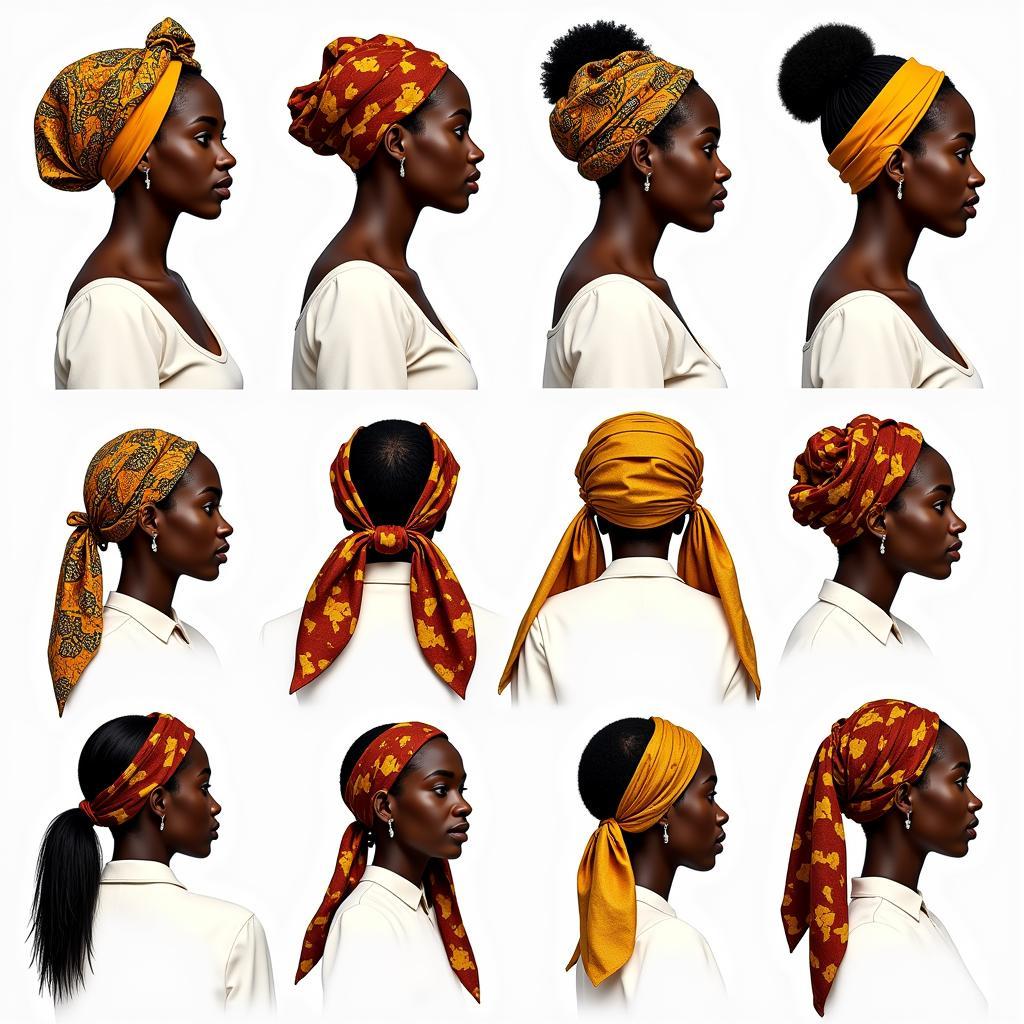 Various Materials and Techniques Used in African Hair Scarfs
Various Materials and Techniques Used in African Hair Scarfs
Modern Interpretations: African Hair Scarfs in Contemporary Fashion
African hair scarfs have transcended their traditional roots and become a celebrated accessory in contemporary fashion. Designers and fashionistas worldwide embrace the vibrant colors, bold patterns, and versatility of these headwraps, incorporating them into both everyday and high-fashion looks. Check out the latest styles in cornrow braiding at african cornrow braid hairstyles.
“The african hair scarf is more than just a piece of cloth; it’s a powerful symbol of heritage and identity,” says Adjoa Asomaning, a renowned Ghanaian textile artist. “It’s a testament to the creativity and resilience of African women.”
Caring for Your African Hair Scarf: Tips and Tricks
Proper care is essential for maintaining the vibrancy and longevity of your African hair scarf. Gentle hand washing and air drying are generally recommended for most fabrics. Avoid harsh chemicals and direct sunlight, which can fade colors and damage delicate materials.
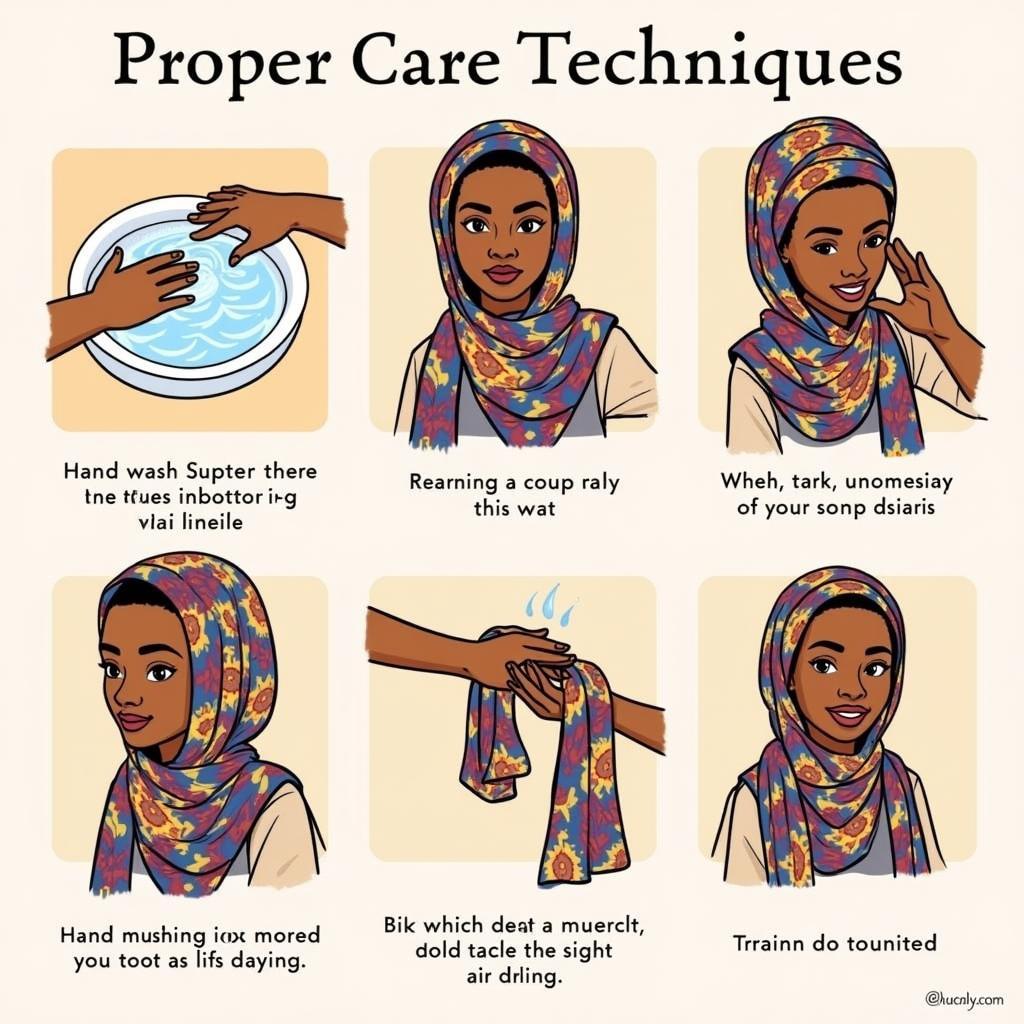 Tips for Caring for Your African Hair Scarf
Tips for Caring for Your African Hair Scarf
Conclusion: Embracing the Beauty and Heritage of African Hair Scarfs
African hair scarfs are more than just a fashion statement; they are a powerful symbol of cultural heritage, artistic expression, and feminine strength. From their rich history to their modern interpretations, these versatile accessories continue to inspire and captivate, connecting us to the vibrant tapestry of African traditions. For those with natural hair, you can explore different braiding styles by visiting african american braided hairstyles for natural hair.
FAQ
- What are some common ways to tie an African hair scarf? There are numerous tying styles, ranging from simple knots to elaborate wraps and folds, each specific to different regions and cultures.
- What materials are African hair scarfs typically made from? Common materials include cotton, silk, linen, and various synthetic fabrics.
- Are African hair scarfs only worn by women? While predominantly worn by women, men in some cultures also wear headwraps for specific occasions and ceremonies.
- Where can I purchase authentic African hair scarfs? Authentic scarfs can be found in African markets, specialty stores, and online retailers.
- How can I incorporate African hair scarfs into my everyday wardrobe? Headwraps can be styled with a variety of outfits, adding a pop of color and cultural flair to any look.
- What is the significance of different colors and patterns in African hair scarfs? Colors and patterns often hold symbolic meanings, representing different occasions, social statuses, or cultural affiliations.
- How can I learn different tying styles for African hair scarfs? Online tutorials, books, and workshops offer guidance on various tying techniques.
Common Scenarios and Questions
-
Scenario: Attending a wedding and wanting to style a headwrap appropriately.
-
Question: What are some elegant and appropriate headwrap styles for a wedding guest?
-
Scenario: Traveling to Africa and wanting to purchase authentic headwraps.
-
Question: Where are the best places to find authentic African hair scarfs while traveling in Africa?
-
Scenario: Having difficulty tying a specific headwrap style.
-
Question: Where can I find tutorials or resources to help me learn different tying techniques?
Further Exploration
Explore more articles on our website about African fashion and cultural traditions. Learn about different hairstyles, clothing styles, and the rich history behind them.
Need assistance? Contact us 24/7: Phone: +255768904061, Email: kaka.mag@gmail.com, or visit us at Mbarali DC Mawindi, Kangaga, Tanzania.
